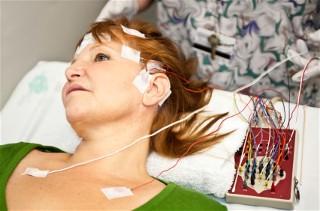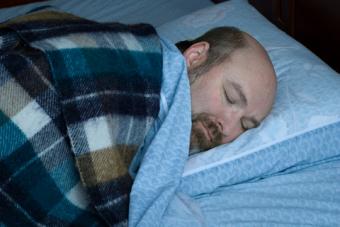
A person agreeing to be a sleep study participant may not know exactly what to expect. An important part of the process is determining whether the study is for research or for diagnosis.
Sleep Study Participant
Sleep studies, also known as polysomnograms, are valuable in helping physicians determine whether a person has a sleep disorder or an underlying medical condition. In some cases, researchers use studies to learn what makes sleep important. A person may participate in a study if a doctor prescribes it or he may volunteer as part of a research project. Often, participants are compensated for volunteering for research.
Research Studies
No one knows exactly why people sleep and many disorders affecting sleeping patterns are mysteries as well. Narcolepsy brain research is among the many subjects studied. However, in many cases participants do not have symptoms of a sleep disorder.
Examples of programs looking for sleep study participants include:
- University of Colorado Department of Integrative Physiology is conducting studies of healthy individuals to help develop ways to adapt to jet lag.
- Harvard Medical School Division of Sleep Medicine is conducting studies on various sleeping issues. Among them are:
- Night shift
- Control of dynamic attention
- Sleep apnea and obesity
- Skill learning and pain perception
Research Participant Rights
Harvard Medical School outlines the rights contributors have when they become involved in research. Among the rights are:

- Why the research is being conducted
- Risks
- Possible discomfort
- Deep understanding of the procedure
-
- How long procedures take
- How many procedures are involved
- Side effects
- Alternative treatments
- Benefits of the research
- Privacy
- Compensation
-
- Time
- Travel
- Injury
- Right to withdrawal from the project
- Whom to contact
- Questions and concerns
- Complaints
- Problems
A staff member should present a document outlining the specific rights and carefully go over the document thoroughly. The contributor then signs the document, noting that he understands his rights.
Personal Medical Studies
Doctors prescribe some studies to determine whether a person has a sleep problem. This is a valuable step in the diagnostic process because the patient is unaware of what occurs while she is sleeping. Common problems that may result in a prescription for overnight observation include, but are not restricted to:
- Narcolepsy
- Insomnia
- Sleepwalking
- Night terrors
- Periodic limb movement disorder
- Bed wetting
- Sleep apnea
In some cases, the individual is unable to sleep during the day when he is working night shift. A study may help determine a way to help a person who has problems sleeping due to shift work.
Measurements
The National Sleep Foundation offers insight into what goes on in a sleep lab. An important topic is the measurements which are taken during the process. Sleep studies measure:

- Blood oxygen levels
- Body positioning
- Heart rate
- Respiration
- Sleep stages
- Sleep behavior
- Snoring
- Apnea
- Talking
- Kicking
- Other unusual activity
Preparation
Preparing for the observation begins well in advance, especially for testing for medical conditions or disorders. It is important to check with your insurance company to make sure that it covers polysomnographic as a diagnostic test. Discuss the option with your physician and get a referral before making an appointment with the sleep lab.Preparing for the observation begins the morning before the test. The test begins at a scheduled time in the evening and the specific time varies according to the sleep centers and the patients' needs. Studies typically end at about 6:30 in the morning but many centers are able to accommodate people with scheduling earlier or later end times.
Most centers request:
- No caffeine after noon
- Wash hair
- No styling products in hair
- Avoid taking naps before the test
- Items to bring
- Sleeping clothes
- Clothes for morning change
- Reading material
- Personal sleeping items (special stuffed animal or pillow for example)
- CPAP machine if they already use one
- Toiletries
- Medications
Some centers allow patients to bring snacks, depending on the nature of the test.
Procedure
The procedure is relatively simple. Either a sleep specialist or a doctor goes over the patient's sleep and medical history. A sleep diary, questionnaire or other paperwork may be completed during the intake session.
Many centers present a video that offers valuable information about studies as well as conditions that can lead to sleep problems. The videos often contain information about what to expect during the test.
The polysomographic technician connects the patient to electrodes that monitor respiration, rapid eye movement (REM), muscle activity, and brain waves. A microphone records snoring and other sounds. Electrodes attached to the chest and abdomen area measure breathing muscle movements.
The technician tests to ensure that the microphone and electrodes are performing normally. The sleep study participant drifts off to sleep and the technician monitors his activity on a television monitor.
If the sleep technician notices sleep apnea symptoms, the technician may waken the participant during the night and ask them to sleep with a CPAP machine to determine if there is a reduction in the apneas.







